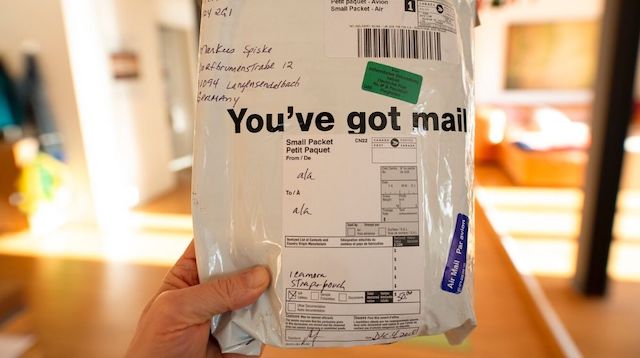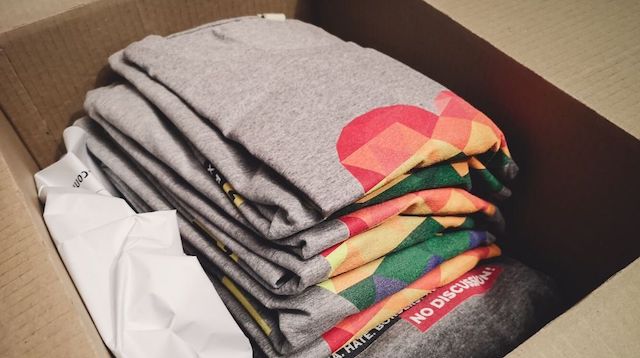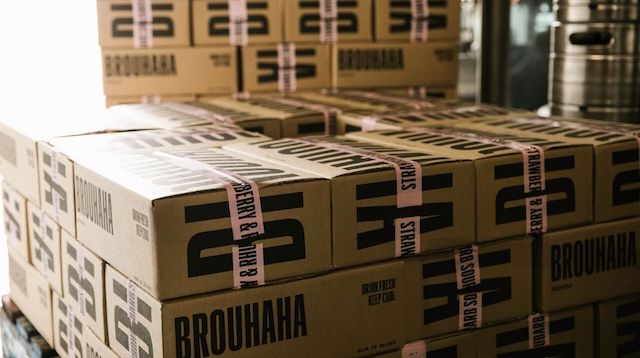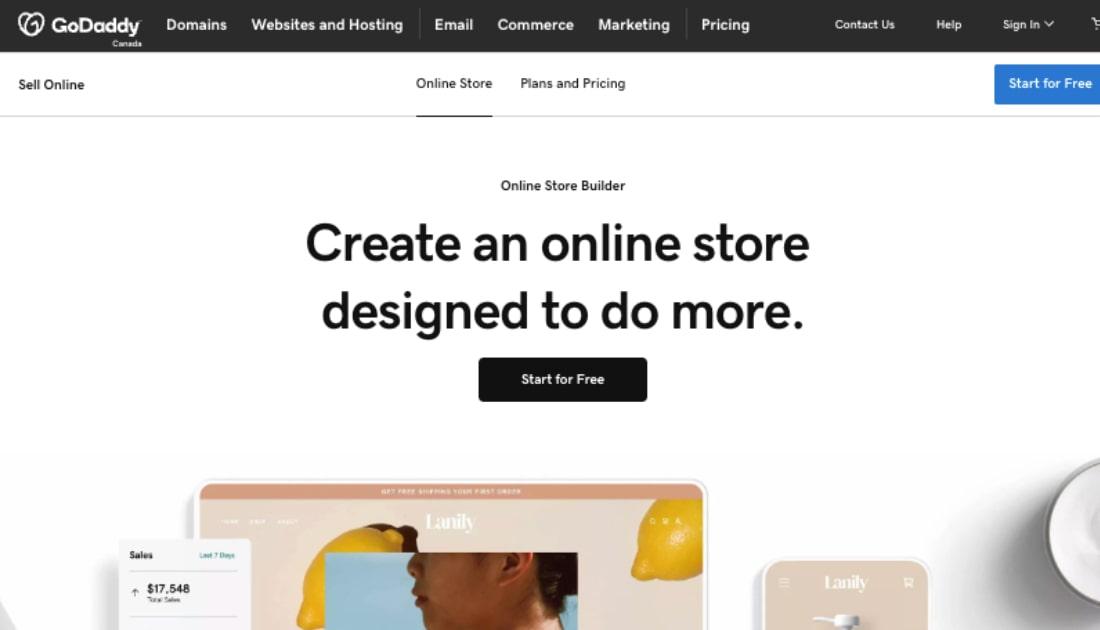The year 2020 has shown retailers of all types and sizes how shipping and fulfilment can be a lifeline for their businesses. In the age of social distancing, shipping allows businesses from brewers to grocers to continue serving their customers safely. What’s more, small business shipping can actually grow your customer base. Which could be a lifesaver once we fully come out of the pandemic.
Shipping allows customers to shop with you from a distance.
While eCommerce businesses have always relied on this strategy, more and more brick-and-mortar retailers are adding delivery to serve customers. Here’s our six-step guide to how to start shipping your products.
Related: What it takes to open an eCommerce business in Canada
Small business shipping in 6 steps
For all the great things shipping can do for your business, it can be tough to get it right. What you need is a clear and thought-out small business shipping strategy. Here’s your guide:
- Choose a carrier.
- Calculate costs.
- Set your shipping rates.
- Packaging and marketing.
- Insurance and tracking.
- Domestic and international shipping.
Before we walk you through the steps of offering shipping, let’s look at the big questions you’ll need to answer first.
Your shipping strategy outline
These are the basic things you need to figure out to get products into customers’ hands at a reasonable cost to you.
Shipping rates
The first question is how are you going to cover the costs of shipping? You can pass the full cost on to customers, but the price tag could keep them from buying a product they already want.
Free shipping is an enticing deal that can prove expensive for you. Or you can absorb some of the costs by offering flat rates.
Accurate measurements
Shipping costs depend on weight and size, so you’ll need to measure and weigh all of your products. This way, you can provide customers with accurate pricing information.

Packaging
What’s your packaging strategy? Small businesses can get free packaging from delivery companies like the US Postal Service, DHL and UPS.
Some businesses prefer to make branded packaging part of their strategy — in other words, use custom packaging with their logo or business names printed on it. Remember, point of delivery is the first opportunity for customers to interact with your brand in person.
#1 Choose a carrier
The most popular carriers in North America include:
- Canada Post
- USPS
- DHL
- FedEx
- UPS
All of these carriers offer different options and packages. It can take time to compare them all to find the right one, but it could pay off in lower costs and convenience.
Most carriers now offer scheduled package pick up from your home.
As your volume grows, hauling all of those packages to the post office becomes less and less feasible. Home pickup allows you to focus on your business and cut down on time spent dealing with postage yourself.
Economies of scale
Volume is another important concern when you’re talking to carriers. Pricing is typically based on volume, so the more you ship, the lower your costs per package.
When you’re just getting started, you might only be sending a few packages each month. But you may be able to negotiate discounts when you start shipping 100 packages per month.
#2 Calculate costs
Once you’ve chosen a carrier, you can start comparing costs.
- You can get accurate weights on your products using a postal scale.
- Don’t forget to keep in mind the dimensions of your packaging and include boxes and packing material in the total weight.
Miscalculating costs can be an expensive mistake that winds up losing your business money. Take the time to add up the full costs of selling and delivering your products, as well as the margins you need to make a profit. (Learn how to figure your margin here.)
#3 Set your shipping rates
Setting your rates is a tough call. There are many options that affect your customers’ experience, your cart abandonment rate and your bottom line.
You have three main options when setting your small business shipping rates:
- Free delivery
- Flat rate
- Real-time carrier rates
Editor’s note: GoDaddy’s Online Store offers all three shipping options. Just create a shipping label with Shippo and you’re in business.
Passing on the full cost of fulfilment to the customer may seem like the simplest choice, but fulfilment costs remain the biggest cause of cart abandonment. There’s no benefit to you in losing a sale because of the unexpected shipping costs.
How do you cut down on cart abandonment? You can offer free shipping or absorb some of the costs through a flat rate.
The cost of free shipping
The cost of free shipping is substantial. You will either have to take it out of your margins, meaning you’re paying for it, or incorporate it into the cost of the product. With the second option, the customer pays for it, although it can make the cost of your products seem higher compared to competing vendors.
You might offer free shipping just on minimum orders, increasing the order size. This can offset the shipping costs you’re paying.
Flat rate shipping

A flat shipping rate stays the same, no matter what the customer buys. Using a flat rate, you can reduce some of the sticker shock at checkout by taking on some of the delivery costs.
Flat rates work best if you have a line of very similar products.
If you sell products with a wide range of sizes and weights, flat rate becomes more complicated.
Another way to reduce cart abandonment without offering free shipping is to make rates as transparent as possible. One way to do this is by including estimates before customers reach the checkout (so they’re prepared) or showing fixed rates at the checkout.
#4 Packaging and marketing
The growth of eCommerce has changed customer expectations when it comes to packaging.
In the past, people didn’t expect much besides a plain box, but now that consumers are having more and more delivered to them, packing has turned into a marketing opportunity.

The unboxing moment has become part of the way consumers experience your brand. You may even have seen unboxing videos online, where vloggers make an experience out of unpackaging much-anticipated deliveries.
You can elevate the unboxing experience and add a sense of luxury to your products with:
- Branded packaging
- Postcards
- Extra touches like craft paper or ribbon
On the other hand, this kind of packaging can also be expensive and time-consuming to assemble.
If it’s not integral to your consumer experience, cut costs by keeping the packaging light and small.
Use right-sized boxes and poly mailers (which are also lightweight) rather than oversized packaging stuffed with Styrofoam or packing peanuts. If you sell a variety of products, make sure you keep a variety of packaging options so you’re never using more than you need.
#5 Insurance and tracking
Insurance and tracking cut down on the risks involved with mailing big-ticket items. It can add to your costs, but so would resending a valuable package that got lost in the mail or delivered to the wrong address. Mistakes like that are rare but they can happen. Some carriers also provide free insurance up to a limit.
#6 Domestic and international shipping
Check with your local postal service to see what forms you need in order to send packages internationally. There may also be customs duties or tariffs that will be due on arrival, that your customer will have to pay to receive their package.

Whether you offer international shipping or not, make a note of it on your website. That way, you can save yourself a lot of time answering questions.
Get shipping right and thrive
Small business shipping can increase sales and bring your products to more customers.
Whether you’re an eCommerce business that depends on shipping or a brick-and-mortar retailer looking to expand your customer base, getting it right can make or break your bottom line.
Take the time to prepare in advance.
As long as you do your research, take all your costs into consideration, opt for cost-effective shipping rates and choose the right packaging, you’re well on your way to getting it right.






